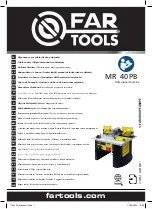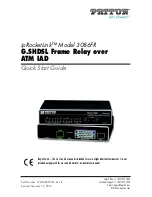
Appendix G: Windows Help
All wireless products require Microsoft Windows. Windows is the most used operating system in
the world and
comes with many features that help make networking easier. These features can be accessed
through Windows
Help and are described in this appendix.
TCP/IP
Before a computer can communicate with the Access Point, TCP/IP must be enabled. TCP/IP is a
set of
instructions, or protocol, all PCs follow to communicate over a network. This is true for wireless
networks as well.
Your PCs will not be able to utilize wireless networking without having TCP/IP enabled. Windows
Help provides
complete instructions on enabling TCP/IP.
Shared Resources
If you wish to share printers, folder, or files over your network, Windows Help provides complete
instructions on
utilizing shared resources.
Network Neighborhood/My Network Places
Other PCs on your network will appear under Network Neighborhood or My Network Places
(depending upon the
version of Windows you're running). Windows Help provides complete instructions on adding PCs
to your
network.
Appendix H: Glossary
802.11a
- An IEEE wireless networking standard that specifies a maximum data transfer rate of
54Mbps and an
operating frequency of 5GHz.
802.11b
- An IEEE wireless networking standard that specifies a maximum data transfer rate of
11Mbps and an
operating frequency of 2.4GHz.
802.11g
- An IEEE wireless networking standard that specifies a maximum data transfer rate of
54Mbps, an
operating frequency of 2.4GHz, and backward compatibility with 802.11b devices.
Access Point
- A device that allows wireless-equipped computers and other devices to
communicate with a
wired network. Also used to expand the range of a wireless network.
Adapter
- A device that adds network functionality to your PC.
Ad-hoc
- A group of wireless devices communicating directly with each other (peer-to-peer)
without the use of
an access point.
AES
(
A
dvanced
E
ncryption
S
tandard) - A method that uses up to 256-bit key encryption to secure
data.
Backbone
- The part of a network that connects most of the systems and networks together, and
handles the
most data.
Bandwidth
- The transmission capacity of a given device or network.
Beacon Interval
- Data transmitted on your wireless network that keeps the network
synchronized.
Bit
- A binary digit.










































